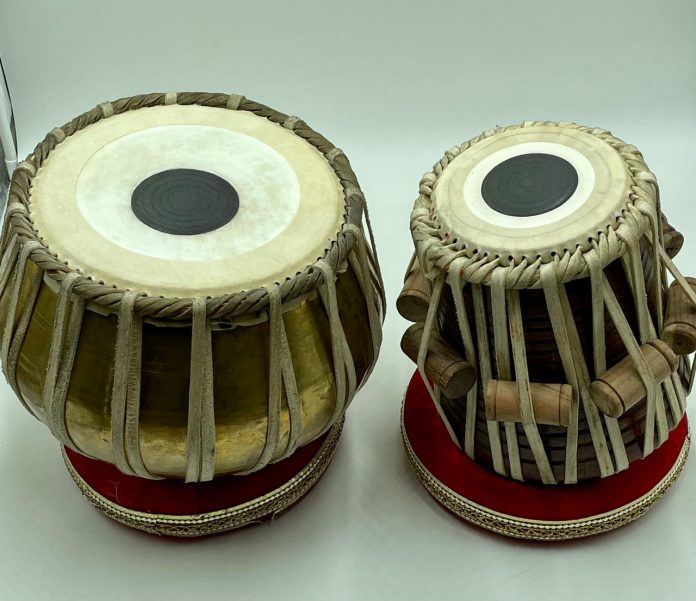The Banaras Tabla Gharana, also known as the Banaras Baj, is one of the most distinguished styles of tabla playing in Indian classical music. Originating from the spiritual city of Varanasi (Banaras), this gharana represents a unique blend of rhythm, emotion, and artistic expression. Known for its rich tonal beauty and intricate rhythmic patterns, Banaras tabla playing holds a revered place in the world of Hindustani classical percussion.
In This Article:
History and Origin
The Banaras Gharana of tabla was established in the early 19th century by Pandit Ram Sahai, a master tabla player who sought to create a style that was both technically sound and artistically expressive. He dedicated several years to developing this gharana, incorporating elements from other styles such as Lucknow and Delhi gharanas, but with a distinctive Banaras flavor.
Key Historical Points:
- Founded: Early 1800s
- Founder: Pandit Ram Sahai
- Location: Varanasi (also known as Banaras or Kashi)
- Goal: To create a complete tabla style suitable for both solo performances and accompaniment in classical dance and vocal music
Unique Features of Banaras Tabla Gharana
1. Tonality and Expression
The Banaras style emphasizes clarity of sound (naad) and emotional expression (bhava). The bols (syllables) are played with precision and tonal depth, making it ideal for both solo and accompaniment settings.
2. Layakari (Rhythmic Play)
Complex and intricate use of rhythm is a hallmark of this gharana. Artists often showcase their command over tihais, chakradhar, and cross-rhythms, displaying both mathematical skill and artistic creativity.
3. Composition Types
Banaras tabla includes a wide array of traditional compositions such as:
- Peshkar: An introductory piece that sets the mood
- Kayda: A theme-and-variation form showcasing creativity
- Rela: Fast, flowing patterns played with energy
- Gat and Tukra: Fixed compositions, often ending with tihais
- Chakradhar: Cyclical patterns repeated three times for a dramatic finish
4. Influence of Dance
Due to its strong connection with Kathak, the classical dance form of North India, Banaras tabla has a theatrical and expressive quality. The interaction between dancer and tabla player is a unique highlight of this tradition.
Famous Banaras Tabla Maestros
1. Pandit Kishan Maharaj
A legendary figure in Indian classical music, known for his powerful playing and flawless layakari. He was a celebrated accompanist and a soloist with global recognition.
2. Pandit Samta Prasad
Also known as “Gudai Maharaj,” his performances were marked by unmatched clarity, speed, and emotional depth. He played a significant role in popularizing Banaras Gharana worldwide.
3. Pandit Kumar Bose
A renowned contemporary tabla virtuoso who has carried forward the legacy of the Banaras style with international acclaim.
Role in Indian Classical Music
Banaras tabla is extensively used in:
- Hindustani vocal music (especially in Thumri, Khayal, and Dhrupad)
- Kathak dance performances
- Instrumental music (sitar, sarod, bansuri, etc.)
- Tabla solo concerts, where the artist presents a full-length performance showcasing different compositions and rhythmic innovations
Moving Forward
The Banaras Tabla Gharana continues to be a vital force in Indian classical music. With its roots in tradition and its eyes on innovation, this gharana represents the soul of Banaras—spiritual, expressive, and deeply rhythmic. Whether you’re a student, a music lover, or an aspiring tabla player, exploring the Banaras style is a journey into the heart of India’s musical heritage.
By – Nikita




